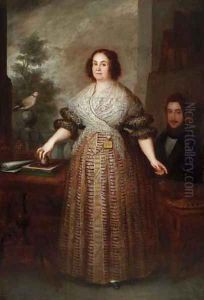Jose Guitierrez de la Vega Paintings
José Gutiérrez de la Vega was a Spanish painter born in Seville, Spain, in 1791. His artistic journey began in his hometown, where he initially trained. Gutiérrez de la Vega was primarily influenced by the romanticism movement, which was prevalent during the early 19th century. This movement emphasized emotion, individualism, and the glorification of the past and nature, which is evident in his work.
Gutiérrez de la Vega moved to Madrid in his early career, where he studied at the Real Academia de Bellas Artes de San Fernando, the premier art school in Spain. During his time in Madrid, he was exposed to the works of great masters, which had a lasting impact on his artistic development. His style was characterized by a combination of neoclassical and romantic elements, with a focus on religious subjects, portraits, and historical themes. He gained recognition for his technical skill and ability to convey dramatic intensity in his paintings.
Throughout his career, Gutiérrez de la Vega received various commissions from religious institutions and members of the Spanish nobility. His work was well-regarded, and he participated in numerous exhibitions, earning accolades for his contributions to Spanish art. In addition to his painting, he also held positions as a teacher and an academic, influencing a new generation of artists.
José Gutiérrez de la Vega's legacy is preserved in the collections of various museums and galleries in Spain, including the Museo del Prado in Madrid, where some of his most significant works are on display. He passed away in 1865, leaving behind a body of work that continues to be studied and appreciated for its emotional depth and technical mastery.
